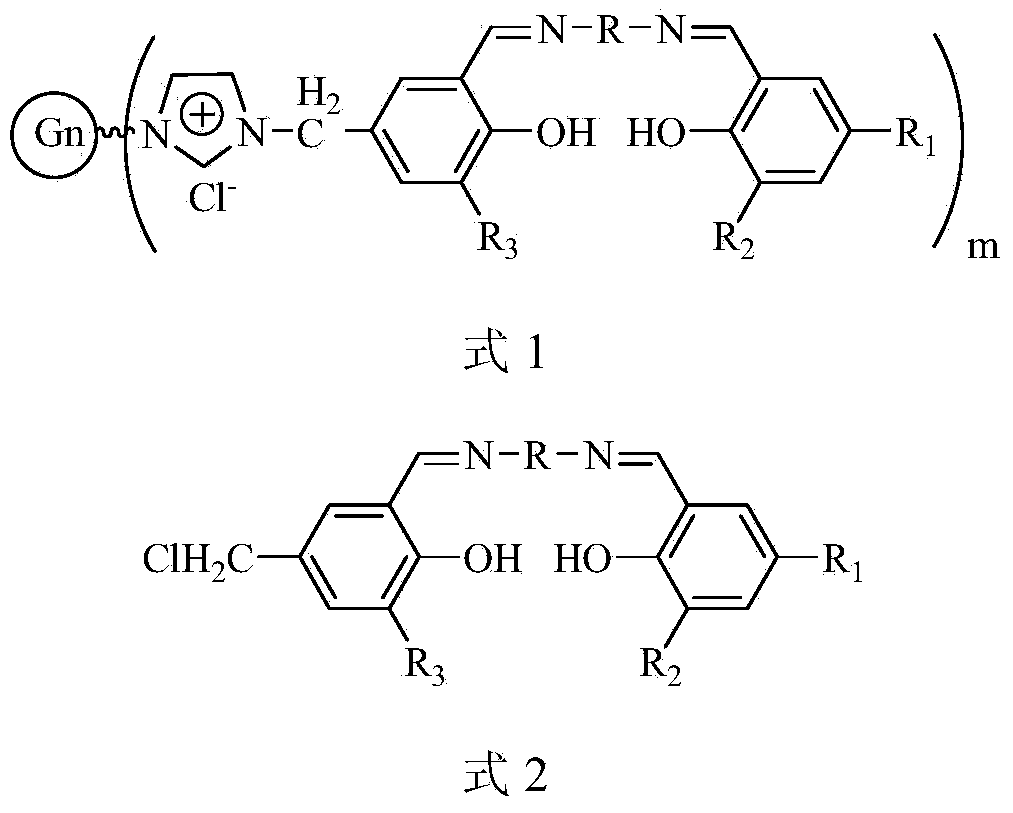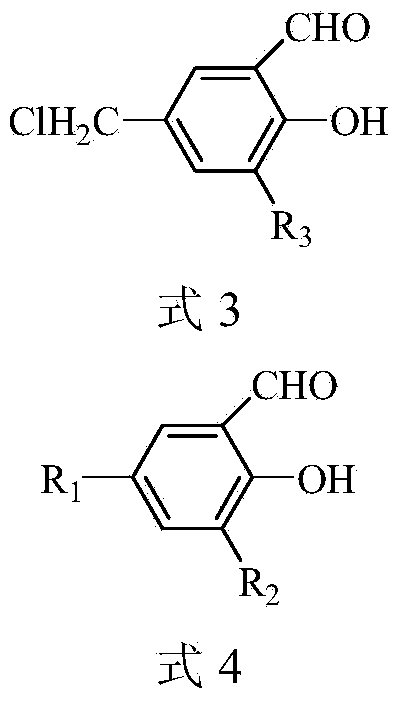Ionic liquid functionalized polyamide-amine type dendritic macromolecule loaded Schiff base compound, and preparation method and application thereof
A technology for polymer loading and polyamide chemistry, which is applied in chemical instruments and methods, applications, food science, etc., can solve problems that have not been reported in literature, achieve regular structure and assist Schiff base to chelate heavy metals.
- Summary
- Abstract
- Description
- Claims
- Application Information
AI Technical Summary
Problems solved by technology
Method used
Image
Examples
Embodiment 1
[0053] (1) Synthesis of the first-generation polyamide-amine dendrimer grafted imidazole compound G1.0
[0054] At 25°C, ethylenediamine (EDA) (1.202g, 20mmol) was used as the nucleus of the macromolecule, and methyl acrylate (MA) (6.887g, 80mmol) was reacted in 50mL methanol solution for 72h (the first step). Finally, the solution was subjected to reduced-pressure rotary evaporation at 70°C. When the solvent was spin-dried, it was cooled to room temperature, methanol was added to the system to dissolve, and then reduced-pressure rotary evaporation was performed at 70°C. The product obtained after repeating three times was obtained in Vacuum drying at 50°C yielded a 0.5 generation (G0.5) macromolecule with four ester functional groups at the end of the macromolecule. Dissolve 0.5G dendrimer (0.202g, 2mmol ester group) in anhydrous methanol (20mL), slowly add 1-(3-aminopropyl)imidazole (0.250g, 2mmol) dropwise at 0°C Methanol solution, reaction 1h. Then, react at 40°C for 72h...
Embodiment 2
[0063] (1) Synthesis of the second-generation polyamide-amine dendrimer grafted imidazole compound G2.0
[0064] At 25°C, the synthesized 1.0G dendrimer (2.580g, 20mmol of amine groups) was dissolved in anhydrous methanol, and then, methyl acrylate MA (3.440g, 40mmol) was added dropwise to the system , the mixture was reacted at room temperature for 72 hours. After the reaction, the solution was subjected to reduced-pressure rotary evaporation at 70°C. When the solvent evaporated to dryness, it was cooled to room temperature, methanol was added to the system to dissolve, and the reduced-pressure rotary evaporation was performed again at 70°C. ,repeat three times. Finally, the obtained product was vacuum-dried at 50 °C to obtain a 1.5-generation (G1.5) macromolecule. Dissolve 1.5G dendrimer (0.304g, 2mmol ester group) in anhydrous methanol (20mL), slowly add 1-(3-aminopropyl)imidazole (0.250g, 2mmol) dropwise at 0°C Methanol solution, reaction 1h. Then, react at 40°C for 72h...
Embodiment 3
[0072] (1) Synthesis of the third-generation polyamide-amine dendrimers grafted with imidazole compounds
[0073] At 25°C, 2.0 g of the synthesized dendrimers (2.856 g, 16 mmol of amine groups) were dissolved in anhydrous methanol, and then methyl acrylate (MA) (2.752 g, 32 mmol) was added dropwise to In the system, the mixture was reacted at room temperature for 72 hours. After the reaction, the solution was subjected to reduced-pressure rotary evaporation at 70°C. When the solvent was evaporated to dryness, cooled to room temperature, methanol was added to the system to dissolve, and the solution was rotated under reduced pressure at 70°C. Evaporate and repeat three times. Finally, the obtained product was vacuum-dried at 50 °C to obtain the 2.5 generation (G2.5) macromolecule. Dissolve 2.5G dendrimer (0.351g, 2mmol ester group) in anhydrous methanol (20mL), slowly add 1-(3-aminopropyl)imidazole (0.250g, 2mmol) dropwise at 0°C Methanol solution, reaction 1h. Then, react a...
PUM
 Login to View More
Login to View More Abstract
Description
Claims
Application Information
 Login to View More
Login to View More - R&D
- Intellectual Property
- Life Sciences
- Materials
- Tech Scout
- Unparalleled Data Quality
- Higher Quality Content
- 60% Fewer Hallucinations
Browse by: Latest US Patents, China's latest patents, Technical Efficacy Thesaurus, Application Domain, Technology Topic, Popular Technical Reports.
© 2025 PatSnap. All rights reserved.Legal|Privacy policy|Modern Slavery Act Transparency Statement|Sitemap|About US| Contact US: help@patsnap.com



